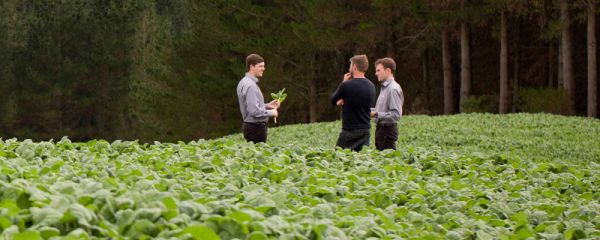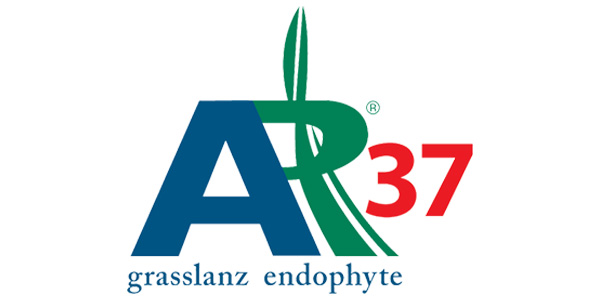
Ryegrass
Ryegrass
Types of Ryegrass
Ryegrass varieties can be categorised by how long they live and their growth characteristics.
These can be classified as:
- Annual – less than one year
- Italian – 1-2 years
- Hybrid – 2-5 years
- Perennial – 5 or more years
DairyNZ Forage Value Index
DairyNZ Forage Value Index
DairyNZ, in collaboration with the NZPBRA, has developed a ‘Forage Value Index’ (FVI) tool for NZ dairy farmers to estimate the profit of perennial and short term ryegrass cultivars for their region.
- The FVI is $/ha value based on expected contribution to dairy farm profit, converted into a 1-5 star rating
- Short term ryegrass FVI is calculated based on the seasonal drymatter (DM) trait
- Perennial ryegrass FVI is calculated based on seasonal DM, seasonal metabolisable energy (ME) and persistence traits
Annual & Italian Ryegrass
Annual & Italian Ryegrass
These two ryegrass species are described together because they are used in similar situations, for their fast establishment and high winter - early spring DM yield. Annual and Italian ryegrasses both establish very quickly and in good conditions are typically ready for a first light grazing 4-6 weeks after sowing, up to 2 weeks sooner than a perennial ryegrass.
When sown in March as a winter crop, annual and Italian ryegrasses produce a similar amount, normally 7-8 t DM/ha over 6-8 months. Annual ryegrass is less persistent and is most commonly autumn sown as a 6-8 month winter/spring crop. Italian ryegrasses typically last 12-18 months in drier areas and 3 or more years under mild summer conditions. Some recent Italian ryegrasses such as Asset AR37 have endophyte so may persist a year longer than those without, depending upon the pests present.
Italian ryegrasses keep growing into summer and over a 12 month period typically produce 15 t DM/ha. However, this figure varies widely with yields of 20 t DM/ha measured in summer wet or irrigated conditions, whereas in very dry summer conditions yields have been as low as 10 t DM/ha.
Short Rotation (Hybrid) Ryegrass
Short rotation or hybrid ryegrasses are generally derived from crossing perennial ryegrass and Italian ryegrass. Cultivars vary, but typically persist from 2-5 years, depending on conditions.
Their feed quality and winter growth are very good, generally a little higher than perennial ryegrass in similar circumstances. Many cultivars contain endophyte, which improves their persistence. The total DM yield of short rotation ryegrasses is similar, or higher, than perennial ryegrass over a 12 month period. The major difference however is the cool season production, which is typically higher. Summer feed quality is influenced by aftermath heading (or seeding) and potential summer growth varies between cultivars.
Short rotation ryegrasses are used in several ways including:
- As a short term pasture, where a paddock is destined to go into crop in 2-5 years
- For undersowing into thin runout pasture to improve its growth for 2-3 years
- Added to perennial pasture seed mixtures to provide increased winter production during the first few years and to boost animal performance in cooler regions
Perennial Ryegrass
Perennial Ryegrass
Perennial ryegrass is the most widely sown grass in New Zealand as it grows well in a wide range of conditions, is easy to establish and manage, provides high animal performance, generally has good persistence and forms a compatible mix with white clover.
Production of perennial ryegrass-based pastures on dairy farms average 14 t DM/ha/year in New Zealand, with yields over 20 t DM/ ha/year achieved under irrigation.
In summer moist environments with good management and low pest pressure perennial ryegrass pastures can last indefinitely.
Where summer dry conditions and significant pest pressure prevail, a more realistic expectation of persistence may be less than 10 years. Pasture management is a key determining factor, so persistence varies widely in these situations.
Diploids
Diploids
Diploid plants have more tillers per plant and due to lower water content per cell, have a higher drymatter content (DM%) per kilogram of fresh weight.
Diploids have a slightly lower metabolisable energy level (around 0.1-0.3 ME lower depending on heading date).
Both diploids and tetraploids have similar protein levels even though diploids are regularly lighter in colour. Diploids are recommended for high stocking rates and where overgrazing and pugging may occur.
Tetraploids
Tetraploids
Across literature tetraploids have shown about a 3% increase in intake across multiples stock types.
Tetraploids are more palatable, are preferred by grazing animals and have been shown to improve milksolids production by up to 7%. However, tetraploid ryegrasses are less robust and require more careful management under stressful conditions.
Because of the extra chromosomes, tetraploids have a bigger cell size and they have higher water content which means they have a lower drymatter content (DM%) per kilogram of fresh weight. Tetraploids are regularly darker in colour than diploids but have no differences in crude protein. They are recommended in systems capable of excellent pasture management, particularly when looking to increase animal performance per head.

Our Ryegrass Range
VIEW PRODUCTS







